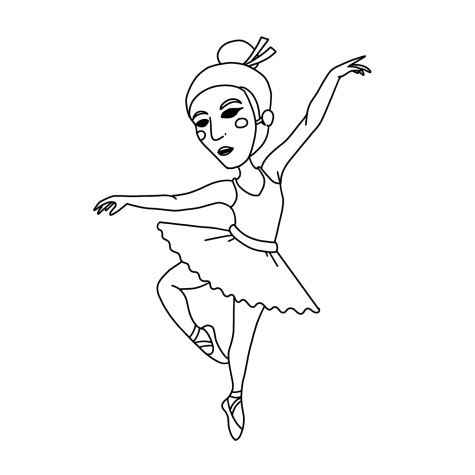The final bow for stereotypes in dance
January 4, 2023

To start the second act of the famous holiday ballet, “The Nutcracker,” a group of dancers take the stage wearing traditional Chinese attire and chopsticks in their hair to perform a dance called “Chinese Tea.” Following this act, dancers will slink around on stage dressed in crop tops and baggy pants to a piece titled “Arabian Coffee.” The issue with these dances is not solely the choreography or costuming, rather the cultural appropriation behind it. Using a culture as the basis of performance in “The Nutcracker” is outdated and should not continue to be permitted.
“The Nutcracker”’ was written in 1891 and performed for the first time during the holiday season of 1892. The dances mentioned above all take place during the second act, “The Land of the Sweets,” which occurs in the dream of the main character, Clara. In more recent years, many of these controversial dances have been altered to be more authentic by some professional ballet companies. However, most other performances are still inherently based on racist ideas of the time and thus should be omitted from the ballet completely.
“The Nutcracker’” is just one instance of racially rooted entertainment. Until recently, many companies had dancers perform with yellowface, or the use of makeup to create stereotypically Asian features on a non-Asian individual in their ballet. This practice is still an integral part of many traditional ballet performances. Using yellowface is disrespectful in many ways, as it portrays an inaccurate picture of Asian culture and individuals. A reason many companies may exercise this practice could be that there are not dancers of color within their production to perform these roles. However, convenience does not always mean that it is the appropriate choice of casting. Even if a significant part of a company is Asian, it still can be considered racist to siphon all Asian dancers into one dance just because it’s “Chinese Tea.” Attempting to demonstrate Chinese culture in this dance is racist in itself because it paints a caricature of Chinese culture. If there is a dance illustrating a specific culture, those involved in the performance should be of that culture, or at the very least acting appropriately and well-educated on the represented group. Having people with a non-Chinese background wear traditional Chinese clothes and use stereotypical gestures without understanding the true meaning behind it can lead people of that ethnicity to feel disrespected instead of represented. It’s crucial to have a performance that highlights special aspects of Chinese culture — and this can only be done with knowledgeable participants or actual constituents.
In the past decade, ballet companies have begun to address the issues with having these performances in their productions. According to the New York Times, companies such as Boston Ballet and the Berlin State Ballet have replaced these character dances with newer and more authentic ones in an attempt to counter stereotypical performances. Many offensive props such as Fu Manchu mustaches and straw hats have also been removed from productions in the New York City and Kansas City Ballet. Besides removing culturally inappropriate dances and altering props, some companies have begun the process of making the classic ballet more modern and authentic by incorporating choreography inspired by traditional Chinese ribbon dancing and productions of Chinese martial arts; these acts are all performed by Chinese dancers.
Many professionals have also begun spreading awareness to this issue. A pledge was started in 2017 by New York City Ballet soloist Georgina Pazcoguin and former dancer Phil Chan called “Final Bow for Yellowface.” The act is supported by countless leaders in dance, such as Misty Copeland and Wayne McGregor. “Final Bow for Yellowface” has spread awareness on how dance should celebrate diversity and inclusion, instead of discriminating against specific groups for the purpose of “maintaining tradition.” The petition has inspired many companies to change major parts of their traditional production.
With “The Nutcracker” being a staple for the holiday season, it can be argued that these dances should not be changed simply to preserve the tradition. However, these customs are built off inaccurate representations that can be very offensive to those who identify with these cultures. The portrayal of ethnic groups in “The Nutcracker” is outdated, and it is vital that cultures are now shown to audiences in respectful and accurate manners instead of solely for the purpose of entertainment.























